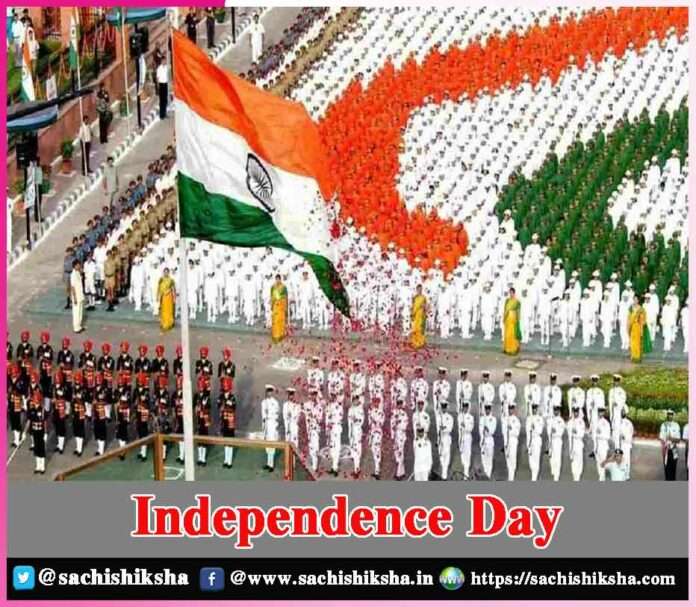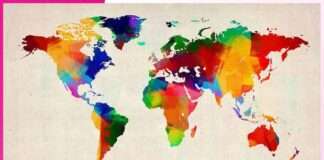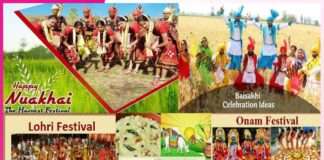Independence Day The Indian Independence Day, which is commemorated spiritually all through the entire nation on the 15th of August each year, maintains a significant place in the calendar of national celebrations because it marks the start of a period of redemption from the grasp of over two hundred years of British colonial rule.
On August 15, 1947, India proclaimed independence from British colonialism, and the responsibilities of power had been turned over to the country’s officials. India’s independence was a test of fate, as the war for revolutionary was lengthy and exhausting, requiring the selfless actions of numerous fighters for liberty who put their very lives on the line for their country.

After Mughal control ended, India was divided into hundreds of princely provinces. The British, who were important in the demise of the Mughal Empire, ruled over the sovereign kingdoms and established the British Indian Dominion. The vast majority of Indians, however, were immensely disgruntled with the oppressive foreign administration. Highly educated Indians saw that the British prioritized their territorial objectives while viewing India as a marketplace.
On this historic day in 1947, the first Prime Minister of Independent India, Jawaharlal Nehru, presented a speech to the nation in which he stated, “During the breaking point of the twelfth hour, and everyone else drifts off, India will come back to the joy of life and independence.” The lifting process of the Indian National Flag on the Lahori Gate of the Red Fort in Delhi, these words beautifully reflected the battle and joy of emerging independent India as it eventually managed in becoming independent from British domination.
Following then, each year on August 15, the entire nation continues to commemorate with flag-hoisting rituals, drills, celebrations of culture, and the recitation of the Indian patriotic song.
British colonists oppressed India for 200 years after taking authority over the nation in 1757, succeeding their triumph at the decisive battle of Plassey. The East India Company controlled India for 100 years before being supplanted by outright British administration following the Indian revolt of 1857.
The country experienced tremendous discontent and rebels as a result of British control. Following then, Indian history has been defined by a number of reprisal actions and rebellions for independence that ultimately forced the British to depart the nation in 1947.
The British Cabinet had mandated Lord Mountbatten to relinquish control by June 30, 1948. If Lord Mountbatten had delayed until June 1948, in the immortal words of C Rajagopalachari, “There’s would not have been any authority left to transmit.” Mountbatten thus pushed the time frame forward to August 1947.
Throughout December 1946 and November 1949, over 300 Indians met to discuss the nation’s democratic future. This group’s gatherings although the “Constituent Assembly” took place in New Delhi, delegates came from all around India and from numerous political organizations. These talks culminated in the creation of the Indian Constitution, which took impact on January 26, 1950.
Independence Day also commemorates the division of India and Pakistan, which resulted in enormous violence, mass displacement, and instability.
Independence Day is noteworthy because it remembers the bravery and enthusiasm of freedom-fighting warriors who battled for our country’s independence. Each year, the Prime Minister raises the flag and greets the people from the Red Fort, as has been done since 1947.
Indian citizens enjoyed the opportunity to vote to elect a government as soon as India gained democracy. It’s strange that America granted that privilege to its residents after 150 years of liberty.
Mahatma Gandhi was an early pioneer who helped gain India’s independence from the British. Gandhi launched his campaign for liberation in 1914, employing a novel style of disobedience known as Satyagraha.
Mangal Pandey was India’s foremost freedom fighter, based on history. In 1857, Pandey initiated the actual war for India’s independence from the British. India gradually gained pace, and it proclaimed an independently sovereign nation in 1947. There is no doubt that, following independence, India’s inhabitants made enormous contributions to economic development and scientific developments. Indians are noted for their tireless efforts, perseverance, and fortitude in the face of adversity.
Given the foregoing, it is clear that Indians have performed well in practically every field since independence. It is definitely an amazing example that Indian men and women have demonstrated their genuine potential.













































